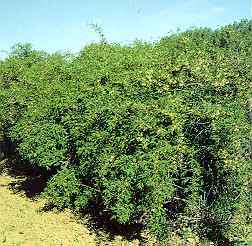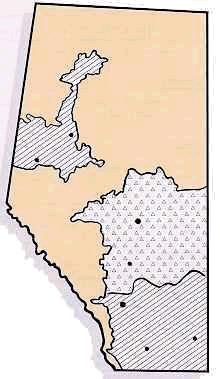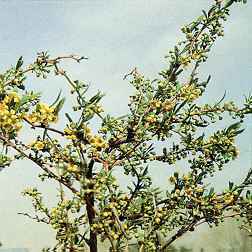| | Plant characteristics | Fall colour | Site preference | Hardiness | Uses | Pruning
.

Scientific Name: Princepia sinensis (D. Oliver) D.Oliver ex Bean.
Plant Characteristics
A dense, spiny, deciduous shrub about 2 m (6 ft) in height at maturity with a spread of about 2 m (6 ft).
Cherry princepia can live 25+ years. It has a slow to moderate growth rate, 10 to 30 cm (4 to 12 in.) a year.
Branches are light grey-brown with spines 6 to 10 mm (0.25 to 0.5 in.) long.
Leaves - Leaves are simple, alternately arranged 5 to 8 cm (2 to 3 in.) long, bright green, narrow shape with smooth edges.
Flowers - Creamy white, 1 to 5 mm (up to 0.25 in.) across, bloom in May to early June.
Fruit - Red cherry like (pit), 1.5 to 2 cm (0.6 to 0.8 in.) across, forms August to September.
A thorny shrub with arching branches, leafs out very early in the spring, a habit which may be considered desirable.
Fall Colour
Cherry princepia leaves turn yellow in the fall.
Site Preference
Will be able to thrive on any well drained soils. Prefers a sandy soil. Will grow on moderately alkali soils.
Cherry princepia is drought resistant.
Prefers full sun to partial shade.
Hardiness
Winter hardy.
.


Uses
Cherry princepia is drought resistant and grows easily into a hedge. The plant is useful as a low growing roadside hedge, or as an ornamental. Planting distance between plants in a row is 1 to 1.5 m (3 to 4.5 ft).
Pruning
Pruning is not often required. Maintenance pruning, removal of broken, crossed, or dead branches.
.

Shelterbelts Varieties for Alberta provides information on a number of other trees and shrubs than may be suitable for shelterbelts.
Visit our website directory for the Reforestation Woodlot Listings. |
|